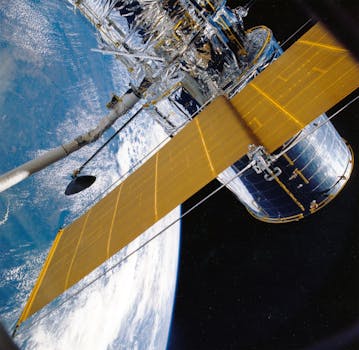The Future of Satellites: Revolutionizing Global Communication and Exploration

The Future of Satellites: Revolutionizing Global Communication and Exploration
The future of satellites is an exciting and rapidly evolving field, with significant advancements in technology and innovation. The use of satellites has become an essential part of modern life, from providing global communication and navigation to enabling space exploration and scientific research. In this article, we will explore the current state of satellite technology and the future developments that are expected to shape the industry.
Current State of Satellite Technology
Satellites have come a long way since the launch of the first artificial satellite, Sputnik 1, in 1957. Today, there are over 5,000 satellites in orbit around the Earth, with many more planned for launch in the coming years. The majority of these satellites are used for communication, navigation, and weather forecasting, with a smaller number dedicated to scientific research and exploration. Satellite technology has improved significantly over the years, with advancements in materials, propulsion systems, and instrumentation. Modern satellites are smaller, lighter, and more efficient, with increased capabilities and longer lifetimes.
Advances in Satellite Design and Manufacturing
One of the key drivers of the future of satellites is the development of new technologies and manufacturing techniques. The use of 3D printing and other advanced manufacturing methods has enabled the creation of smaller, more complex satellites with reduced production times and costs. Additionally, the development of new materials and propulsion systems, such as electric propulsion and advanced ion engines, is improving the efficiency and capabilities of satellites. The use of autonomous systems and artificial intelligence is also becoming more prevalent, enabling satellites to operate independently and make decisions in real-time.
Future Applications and Services
The future of satellites holds great promise for a wide range of applications and services. One of the most significant areas of growth is expected to be in the field of satellite-based broadband communication. The launch of new constellations of satellites, such as those planned by SpaceX and OneWeb, is expected to provide high-speed internet access to remote and underserved communities around the world. Other areas of growth include satellite-based navigation, weather forecasting, and Earth observation, with the use of satellites to monitor climate change, track natural disasters, and predict weather patterns.
Conclusion
In conclusion, the future of satellites is an exciting and rapidly evolving field, with significant advancements in technology and innovation. The use of satellites has become an essential part of modern life, and the future developments that are expected to shape the industry will have a major impact on global communication, navigation, and exploration. As satellite technology continues to improve and new applications and services are developed, we can expect to see significant advancements in the coming years.






